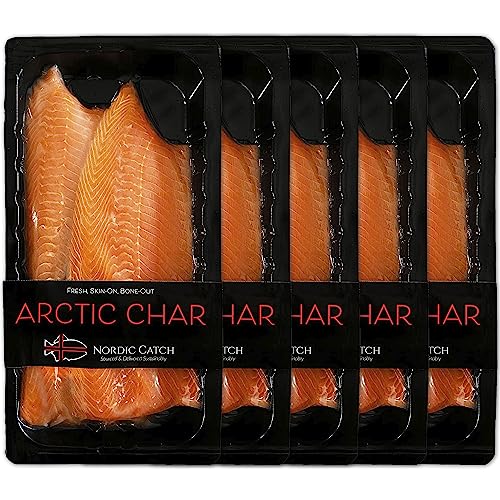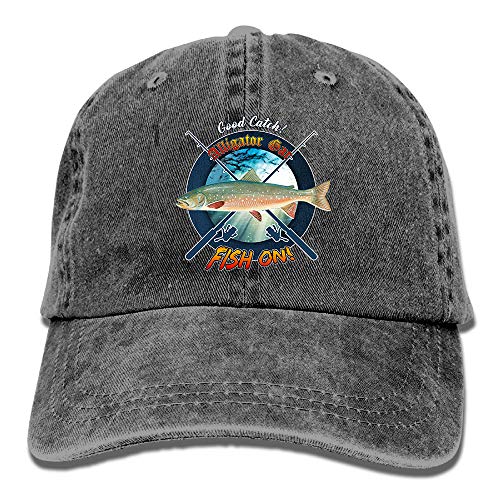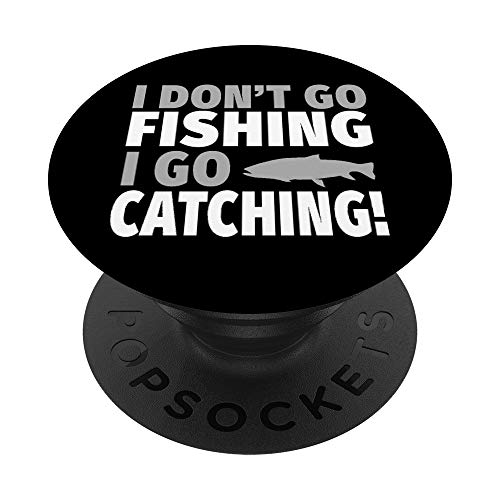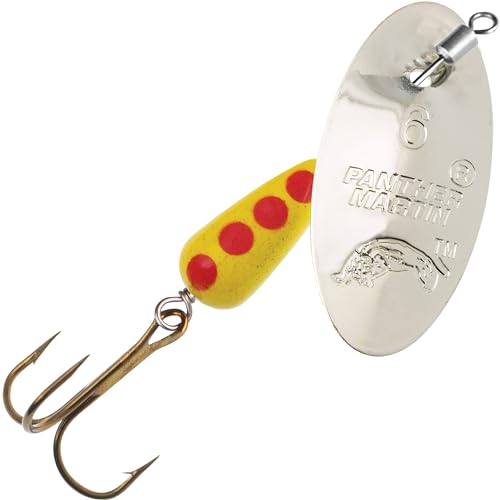Imagine casting your line into some of the most pristine waters on earth.
Here, the Arctic Char can weigh up to 10 pounds. And, there’s a chance to catch a world record 32-pounder. This guide takes you on a journey into the magical world of fishing in Canada’s Northern waters.
It covers top fishing spots, expert techniques, and the gear you’ll need. It’s perfect for both new and experienced anglers. Get ready to explore the untouched wilderness and learn about Arctic Char fishing.
Key Takeaways about Arctic Char
- The Ungava Bay region is renowned for Arctic Char averaging 10 lbs, with some reaching up to 16 lbs.
- Catch and release practices are essential for preserving the vibrant Arctic ecosystems.
- Outfitters like Rapid Lake Lodge prioritize limited group sizes for personalized support.
- Flying from Montreal to the Tunulik River Fishing Camp offers access to prime fishing spots.
- Booking early is critical to securing your place in these highly sought-after fishing experiences.
- Quality fishing gear, including medium action rods with 8 to 10 pound line, is crucial for success.
Introduction to Arctic Char Fishing
Arctic Char fishing is a thrilling adventure that draws anglers from all over the world. This fish is special because of its unique traits. It can grow really big, weighing from 1 lb to 31.2 lbs, making fishing exciting.
This fish is important in the diets of many in the Western Arctic. It’s not just about size; it’s also about the challenge it offers. An introductory guide to Arctic Char fishing shares tips on their behavior and where to find them.
Knowing the best spots and when to fish can make the experience even better. Arctic Char can be found in many places, like the Bow River and Kenai River. This makes fishing for them exciting and rewarding for those who love it.
Affiliate Disclaimer: We may earn a commission from purchases made through the links on this page.
Understanding Arctic Char
Arctic Char is a fascinating freshwater fish known for its vibrant colors and adaptability. It’s important for anglers to know about Arctic Char characteristics and where they live for a great fishing experience.
Characteristics of Arctic Char
Arctic Char stand out with their bright red belly and many colors above. They can grow big, up to 20 pounds and 38 inches long. Their strength makes them popular among anglers.
They prefer temperatures between 39 and 60 degrees Fahrenheit. This affects their growth and how they move. When it gets too warm, they stop migrating, showing how sensitive they are to their environment.
Habitat and Distribution
Arctic Char live in rivers, streams, lakes, and coastal areas of the Arctic Ocean. They are mostly found in North America, especially in the Northwest Territories and Nunavut. In Nunavut, fishing for Arctic Char supports many jobs and is culturally important.
Changes in the climate might make freshwater Arctic Char more common. They like shallow waters, usually less than three feet deep, but can go as deep as 230 feet. They also like estuaries, feeding there until the sea ice melts.
Knowing about Arctic Char’s habitats and traits helps anglers improve their fishing. Understanding how these fish live helps with sustainable fishing and appreciation for this amazing species.
Best Arctic Char Fishing Spots in Canada
Canada is a top spot for Arctic Char fishing, drawing anglers from far and wide. The Northwest Territories and Nunavut are key places for catching this fish. Each spot offers unique benefits, like stunning views and lots of Arctic Char.
Northwest Territories
The Northwest Territories are known for their untouched fishing spots. Rivers like the Coppermine and the Tree are famous for their big Arctic Char. Anglers love the clear, quiet waters where they can catch trophy-sized Char.
There’s a good chance of catching Sea-run Arctic Char here, with some days yielding over 50 fish. This makes the fishing here truly exciting.
Nunavut
Nunavut is a top choice for Arctic Char fishing, especially near Kugaaruk. This town gives access to some of the best fishing areas. The Char caught here is known for its amazing taste.
Many visitors go to Arctic Char fishing camps to enjoy the fishing and the Arctic scenery. They learn traditional fishing methods, which adds to the experience.
Quebec’s Payne River
The Payne River in Quebec is a great spot for Arctic Char fishing. It has organized fishing camps for both new and seasoned anglers. The local Inuit culture adds to the experience, teaching visitors about traditional fishing.
Anglers often use special techniques to catch Char in the river. This makes their fishing trips successful.
For a great fishing trip, it’s important to know the local rules. Check out guides like Nunavut fishing regulations for info on licenses, catch limits, and how to fish sustainably.
| Location | Key Features | Optimal Fishing Methods | Best Time to Visit |
|---|---|---|---|
| Northwest Territories | Coppermine and Tree Rivers, trophy-class Char | Fly fishing, spinning | Summer months, peak fishing season |
| Nunavut | Kugaaruk town, traditional fishing camps | Traditional harpooning, bait casting | Late June to early August |
| Quebec’s Payne River | Cultural Inuit experience, organized camps | Casting with artificial lures | July to September |
Arctic Char Fishing Season

The Arctic Char fishing season is a great time for anglers who want to catch these beautiful fish. It’s important to know when and how the fishing conditions change. The best times to fish are in late spring and summer. During these months, the Arctic Char are more active and easier to catch.
Planning your trips during these peak times can increase your chances of catching more fish.
Peak Fishing Times
The best fishing for Arctic Char is usually from 10:00 am to 8:00 pm. You can catch fish that weigh about 13 to 15 pounds, sometimes even bigger. In some places, you might catch over forty Char and release them back into the water.
Some areas, like Kugaaruk, Nunavut, are great for fishing. They have a small local population, which helps keep fishing sustainable.
Weather and its Impact on Fishing
Weather affects Arctic Char fishing a lot. Things like temperature, water flow, and the overall weather can change how the fish behave. For example, when it’s warm and sunny, the Char tend to be more active.
Using the right fishing lures, like the Pixie spoon, can help you catch the big, strong Char. The weather makes a big difference in how well these lures work.
| Time of Day | Duration (hours) | Caught Weight Range | Caught Length | Spots Fished |
|---|---|---|---|---|
| 10:00 am – 8:00 pm | At least 6 | 13 – 15 pounds | Above 30 inches | Multiple including Neiland Bay and The President’s Pool |
Essential Arctic Char Fishing Gear
Choosing the right gear is key to a successful Arctic Char fishing trip. The right rods, reels, lures, and clothing make a big difference. They help you fish well even in tough Arctic weather.
Rods and Reels
For Arctic Char fishing, the right rods and reels are crucial. A fast action 9’0 #6 rod is perfect for big flies and catching large Arctic Char. Fly fishing gear usually includes single hand rods, from #5 to #7.
Make sure your reel has over 100m of backing. This is because Arctic Char can be strong. In Greenland’s rivers, short head weight forward floating fly lines work best. Leaders should be 9’ to 12’ long for the best presentation.
Lures and Baits
Streamers in bright colors like Red, Pink, Purple, and Orange are top choices for Arctic Char. They work well in rocky pools when weighted. Nymphs in metallic colors like silver, copper, and gold are also popular.
Using single hooks, either barbless or with pinched down barbs, in sizes from 1/2 to 1 1/4 ounces is best. These tips can help you catch more fish.
Clothing and Accessories
Wearing the right fishing clothes is crucial for staying warm and dry in Arctic weather. Waterproof rain suits and hiking boots are essential. A 100% waterproof duffel bag is great for carrying your gear.
Don’t forget important items like life jackets, sleeping bags, and coolers. They make camping and fishing trips more enjoyable. Having the right gear ensures you stay warm and focused on fishing.
Arctic Char Fishing Techniques
Anglers have different ways to fish for Arctic Char. Each method has its own benefits and challenges. Knowing about fly fishing and spinning can help pick the best one for you and the situation.
Fly Fishing vs. Spinning
Fly fishing uses artificial flies to look like Arctic Char’s food. It works well when char eat insects on the surface in warm months. Using flies like Woolly Bugger or Egg Fly is great, especially in cold water where char go for submerged lures. A 9′ number 8 weight rod with floating line is best for casting.
Spinning is versatile, especially in cold rivers and streams. Use an 8-9 foot rod that spins fast for precise lure placement. Bright lures like streamer imitations and leech patterns work well. They attract char by moving like real food.
Best Practices and Strategies
Using good Arctic Char fishing strategies can increase your chances of catching them. Here are some tips:
- Choose lures that look like their food, like salmon eggs or insects.
- Cast slowly to make your lure move like real bait.
- Arctic Char like cold water, so keep an eye on the temperature.
- Fish from early spring to late summer for the best results.
- Look for deep holes or calm pools where char hang out.
Getting better at these techniques can make fishing for Arctic Char more rewarding.
| Technique | Advantages | Challenges |
|---|---|---|
| Fly Fishing | Works well for surface feeders; allows for precise presentations. | Needs casting skill; wind can affect it. |
| Spinning Fishing | Easy for beginners; works in different water types. | Needs more gear; not as precise as fly fishing. |
Arctic Char Fishing Tips for Success
Understanding what affects Arctic Char fishing can make your trips better. Paying attention to the water conditions is key. Things like water clarity, current strength, and temperature change how you fish.
Clear water means you need to be more careful with your flies. But in murky water, you can fish more aggressively.
Understanding Water Conditions
Anglers say certain water conditions make Arctic Char more active. Cooler water pulls fish out early in the morning and late in the evening. Currents also move food around, which affects where fish hang out.
Checking local reports and conditions can help you fish better.
Choosing the Right Time of Day
The time you fish is very important for Arctic Char. Early mornings and evenings are best because fish are most active then. Using bright flies or fishing in shallower waters can help if you see spawning.
Fishing during these times can lead to catching many fish in one day.
For more tips and info on fishing, check out this article on Arctic Char fishing.
Hiring Arctic Char Fishing Charters
Choosing Arctic Char fishing charters can make your fishing trip in Canada better. These charters have many benefits for both new and skilled anglers. They ensure a trip you’ll always remember, with top fishing gear, local knowledge, and access to great fishing spots.
Benefits of Charter Services
There are many advantages to hiring a fishing charter. Here are some key benefits:
- Experienced Guides: Local guides know a lot about Arctic Char and how to catch them.
- Access to Hotspots: Charters can take you to the best fishing spots that are hard to get to on your own.
- Premium Gear: Most charters give you top-quality fishing equipment to increase your chances of catching fish.
- Safety First: Charters that follow federal rules make sure your fishing trip is safe.
- Convenient Packages: Many charters offer trips that include fishing, lodging, and meals, making your trip easy to plan.
Top Charter Companies in Canada
There are several top companies in Canada that specialize in Arctic Char fishing. Each company offers unique services for anglers. Here are a few leading ones:
| Company Name | Location | Highlights | Starting Price |
|---|---|---|---|
| Plummer’s Arctic Lodges | Yellowknife | Over 75 years of service, exceptional lodging and fishing experiences. | £497 |
| FishingBooker | Yellowknife | Safety-focused, guarantees to match competitor rates. | Varies |
| Local Guides (e.g., Gerald) | Various Locations | Personalized fishing experiences based on local conditions. | Custom pricing |
With a fishing charter, you get to make the most of local knowledge and advanced gear. You also get to enjoy Canada’s stunning waters. Whether you’re in Yellowknife or other top spots, the best fishing charters in Canada offer services that make each trip unique. Think about these top companies for your next Arctic Char fishing trip.
Arctic Char Fishing Regulations to Know
It’s key for anglers to know the Arctic Char fishing rules in Canadian waters. Following the rules helps with conservation and makes fishing sustainable.
Licensing Requirements
To fish for Arctic Char in Canada, you must get the right license. Each province has its own rules. For example, in Newfoundland and Labrador, you can get a license for your zone. This includes opening and closing dates for different seasons.
It’s important to keep up with updates, especially about special management areas. These areas might have different rules and dates.
- In Insular Newfoundland, you can catch 12 Arctic char or 2.25 kg round weight plus 1 fish. You can have 24 fish or 4.5kg plus 1 fish in your possession.
- In Labrador, you’re allowed to catch two Arctic char a day and have four in your possession.
- You need a National Park Fishing Permit for fishing in national parks, which is different from regular licenses.
Catch and Release Guidelines
Following catch and release guidelines is crucial for keeping Arctic Char populations healthy. It’s important to handle fish carefully to help them survive after release. Here are some tips:
- Use barbless single hooks to reduce fish injuries.
- Keep fish out of water for as little time as possible to reduce stress.
- Don’t use natural bait in areas where only artificial flies are allowed.
By following these practices, you’re not only following the rules but also helping the Arctic Char ecosystem. It’s important to know the local rules, like the limit of 2 Arctic char in some areas, for responsible fishing.
| Region | Daily Bag Limit | Possession Limit |
|---|---|---|
| Insular Newfoundland | 12 Arctic char or 2.25 kg + 1 fish | 24 fish or 4.5 kg + 1 fish |
| Labrador | 2 Arctic char | 4 Arctic char |
| National Park | 1 of any species | Counts towards permit holder’s limit |
Knowing the latest Arctic Char fishing rules makes fishing better and helps protect these amazing fish for the future.
Personal Experiences in Arctic Char Fishing
Arctic Char fishing stories come from the tales shared by those who love the water. Anglers from different places meet to share their bond with the sea and its char. These stories tell of the excitement of catching a char and the beauty of the Canadian wilderness. They create memories that touch both seasoned fishermen and beginners.
Memorable Fishing Stories
The mouth of the Armshow River is a top spot for Arctic Char fishing, about 30 kilometres from Iqaluit. Many remember the thrill of catching their first char here. Friends gather, casting lines and sharing tales, waiting for a bite. These moments build friendships and create memories.
At the Sylvia Grinnell River, diverse groups come together, adding to the charm of Arctic Char fishing. People from places like Israel, Newfoundland, and British Columbia meet here. The warm atmosphere lets everyone, new or experienced, share their fishing stories and challenges.
Learning from Local Anglers
Learning from local fishermen is key to improving your fishing skills. Guides like Louis-Philip Pothier from Inukpak Outfitters teach valuable tips. They show how tides affect fishing, like at Sylvia Grinnell River, where a 12-meter tide is crucial. This knowledge not only helps your fishing but also enriches your experience with local wisdom.
Talking to residents in Iqaluit reveals stories about the changing fishing conditions and the history of char populations. Sharing local knowledge shows that each fishing trip is a chance to learn more. Arctic Char fishing is a journey of growth and discovery.
Conclusion
Arctic Char fishing is an exciting adventure for those who love to fish. This guide has shared the unique aspects of catching these fish. It covers their traits, where they live, and how to catch them. Whether you’re in the Northwest Territories or Quebec, knowing about Arctic Char fishing makes your trip better.
The climate change affects Arctic Char in many ways. It’s important for anglers to follow fishing rules and use sustainable methods. This helps protect these fish and their homes. Personal stories show the joy of using colorful lures and the excitement of catching a fish.
Before your next fishing trip, get ready with knowledge and passion. The beauty of the landscapes and the challenge of catching Arctic Char appeal to all anglers. Make sure you have the right gear and enjoy the beauty around you. For more tips and stories on Arctic Char fishing, check out this fishing insights.
Discover detailed information and practical tips for targeting specific fish species in Canada on the Fishing for Specific Species page.
Learn about the best techniques, suitable baits, and ideal fishing spots to increase your chances of a successful catch. Whether you’re a beginner or an experienced angler, this guide offers valuable insights to enhance your fishing experience.
FAQ about Arctic Char
What is the best time of year for Arctic Char fishing?
The best time for fishing Arctic Char is in late spring and summer. This is when they are most active and plentiful in Canadian waters.
What gear do I need for Arctic Char fishing?
You’ll need a medium to heavy rod, a matching reel, and certain lures like streamers and spoons. These are key for catching Arctic Char.
How can I ensure a successful Arctic Char fishing trip?
For a successful trip, pay attention to the water conditions and the best fishing times. Also, practice good casting and handling techniques.
Are there specific regulations for Arctic Char fishing in Canada?
Yes, there are rules like licensing and catch-and-release policies that differ by region. Always check the local laws before you go fishing.
What are some recommended Arctic Char fishing techniques?
Fly fishing and spinning are both good methods for catching Arctic Char. The best one for you depends on your fishing style and the fishing conditions.
Do I need a guide for Arctic Char fishing?
Getting a fishing charter with an experienced guide is a smart move. They know the best spots and can provide top-notch gear to help you catch more fish.
What are the best locations for Arctic Char fishing in Canada?
Top spots for Arctic Char fishing include the Northwest Territories, Nunavut, and the Payne River in Quebec. Each place offers a unique fishing adventure.
How does weather affect Arctic Char fishing?
Weather, like water flow and temperature, changes fish behavior. Knowing this can help you plan better fishing trips.
What should I wear when fishing for Arctic Char?
Wear layers with waterproof and insulated outerwear, and good footwear. This keeps you warm and dry in the unpredictable Arctic weather.
How can local anglers help enhance my fishing experience?
Talking to local anglers can give you tips on the best techniques and fishing spots. This can greatly improve your fishing trip.
Source Links
- https://canada4fishing.com/Quebec/arctic-char-fishing.html
- http://higharcticlodge.ca/fishing.htm
- https://www.steelheadflyfisher.com/ekaluk-sea-run-arctic-char
- https://weberarctic.com/our-adventures/products/high-arctic-char-fly-fishing
- https://fishing-world.fandom.com/wiki/Arctic_Char
- https://pointerflyfishing.com/fishing/30-arctic-char
- https://www.canada.ca/en/polar-knowledge/publications/aqhaliat/volume-4/arctic-char.html
- https://guidesly.com/fishing/fish-species/arctic-char
- https://weberarctic.com/stories/fishing-for-arctic-char
- https://midwestoutdoors.com/destinations/nunavut-canada-fishing-destinations-char/
- http://theflysyndicate.blogspot.com/2018/10/tree-river-sea-run-arctic-char-on-fly.html
- https://bunksoutdoorangle.com/fishing-canadas-arctic-char/
- https://www.anglingnewfoundlandlabrador.com/angling-stories/arctic-char-the-silver-swimmers
- https://www.farlows.co.uk/blog/jays-guide-to-arctic-char-fishing
- http://higharcticlodge.ca/09Things.htm
- https://icelandfishingguide.com/what-equipment-to-bring-when-going-fly-fishing-in-iceland/
- https://norrik.com/saltwater-fish/arctic-char/
- https://flyfishcircle.com/fish/arctic-char
- https://www.thenewflyfisher.com/articles/legendary-arctic-char/
- https://www.flyfishing.co.uk/threads/catching-arctic-charr-by-design-from-deep-lochs.551702/
- https://www.baityourhook.com/arctic-char-fishing
- https://www.speypages.com/threads/northern-territories-arctic-char.164401/
- https://fishingbooker.com/fish/arctic-char/ca/NT/yellowknife
- https://bunksoutdoorangle.com/a-nunavut-nomad-for-arctic-char/
- https://www.dfo-mpo.gc.ca/fisheries-peches/decisions/fm-2019-gp/atl-12-eng.html
- https://parks.canada.ca/pn-np/nt/aulavik/activ/15act_1/activ4
- https://www.quebec.ca/en/tourism-and-recreation/sporting-and-outdoor-activities/fishing-rules/news?type=116&exclurePid=&exclureAnnexesPid=
- https://oodmag.com/chasing-char-iqaluit/
- https://northernwoodlands.org/articles/article/new-englands-arctic-char
- https://captainexperiences.com/species/arctic-char
- https://www.frontiersin.org/journals/sustainable-food-systems/articles/10.3389/fsufs.2021.654117/full
- https://www.maine.gov/ifw/docs/strategic-management-plans/arcticcharr.pdf
- https://www.canada.ca/en/polar-knowledge/polar-blog-articles/how-is-climate-change-affecting-arctic-char.html






